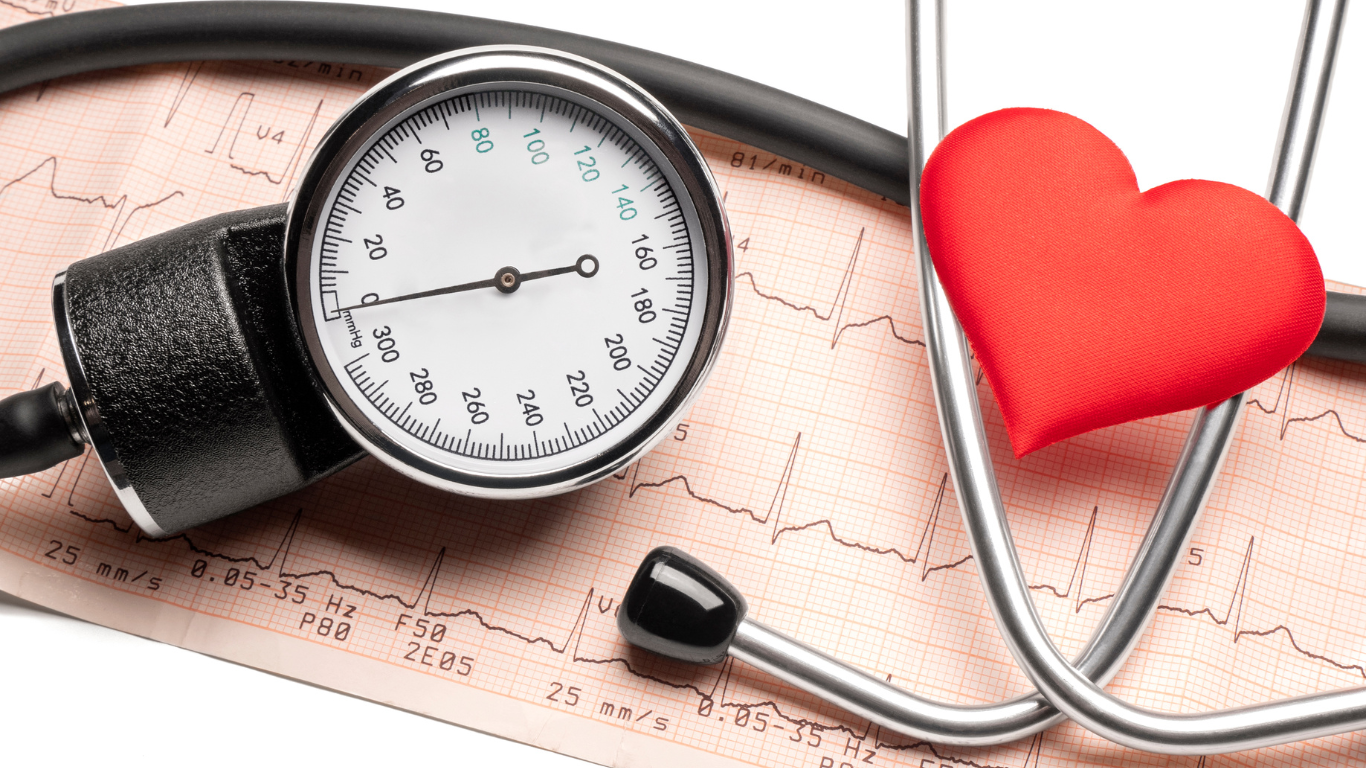Lowering High Blood Pressure With a Low Carb Diet
High blood pressure or hypertension is a common health condition that poses significant risks to overall well-being. Managing blood pressure levels is crucial for reducing the risk of heart disease, stroke, and other complications. While there are various approaches to blood pressure management, adopting a low-carb diet has shown promising results.
A low-carb diet focuses on reducing carbohydrate intake while emphasizing protein and healthy fats. By adopting a low-carbohydrate diet, individuals with hypertension and other lifestyle-related illnesses can stave off dramatic spikes in their systolic blood pressure and, over time, reduce their reliance on blood pressure medication. As a bonus, the reduced carbs in the diet will show up as significant weight loss.
How does a low-carb diet control hypertension? Also, how does one shift from a high-carb diet to a Keto diet? We've got you covered.
We will explore the science-backed benefits of a low-carb diet for lowering high blood pressure and provide practical tips for incorporating this dietary approach into your lifestyle.
Read on to learn the benefits of a low-carb diet for high blood pressure. Also, read to the end to see how you adopt a low-carb diet to start lowering blood pressure and experiencing healthy changes in your body weight.
Understanding High Blood Pressure or Hypertension
High blood pressure is a medical condition characterized by elevated blood pressure levels. It is often referred to as the "silent killer" because it typically shows no symptoms but can have serious health consequences if left unmanaged.
When blood pressure remains consistently high, it puts strain on the blood vessels and organs, increasing the risk of heart disease, stroke, and other complications.
Managing high blood pressure is crucial for overall health and well-being. By reducing blood pressure levels, individuals can significantly lower their risk of cardiovascular problems.
There are many ways to manage high blood pressure. For the most part, physicians and patients have done this with high blood pressure medication. However, a better and more sustainable way would be to adopt a dietary approach that reduces high blood pressure.
When it comes to dietary interventions, a patient can reduce fat intake (as is the case with a low-fat diet). Alternatively, a patient can consume a diet that promotes insulin levels and sensitivity, as studies are beginning to show.
The Correlation Between Insulin Resistance and Blood Pressure
Several factors contribute to the development of high blood pressure, including genetic predisposition and unhealthy habits like sedentary lifestyles. For the most part, we can attribute hypertension to unhealthy food choices that lead to high blood insulin levels and insulin resistance.
Insulin resistance is the phenomenon where there's an abundance of insulin circulating in the blood. While this may sound like a good thing (since insulin is responsible for blood glucose levels), too much of it will cause cells to become resistant to insulin. This leads to various metabolic imbalances, including those that lead to blood pressure increases.
Unfortunately, creating an insulin-resistant environment is not difficult. All you would have to do is consume a high-carb diet — like the Standard American Diet.
Studies show that insulin resistance contributes to and coexists with hypertension and metabolic syndrome. One 2019 study suggested the correlation between insulin resistance and the development of metabolic syndrome and high blood pressure.
In the study, researchers found that insulin resistance was present in up to 80% of the participants diagnosed with hypertension. The mechanisms behind the relationship remain unclear. Nevertheless, the correlation is relevant for anyone looking to improve their blood pressure without using blood pressure medication.
Interestingly, another study pointed to the significance of low-carbohydrate diets for improving cardiovascular health. A 2021 study published by the American Heart Association found that low insulin sensitivity affected systolic and diastolic blood pressure.
A Low-Carbohydrate Diet Is an Effective Method of Blood Pressure Reduction
Because of the link between insulin insensitivity and high blood pressure, it becomes clear that a low-carb diet doesn't just help people lose weight. It helps people manage blood pressure even in the absence of blood pressure medications.
Scientific studies have provided evidence of the effectiveness of a low-carb diet in lowering blood pressure levels. The reduction in blood pressure is because of several factors and mechanisms associated with this dietary approach.
A Low-Carbohydrate Diet Reduces Insulin Resistance
Firstly, low-carb diets like the Keto diet and Ornish diet have been shown to improve insulin sensitivity. By reducing carbohydrate intake, blood sugar and insulin levels stabilize, leading to better regulation of blood pressure. This effect is particularly significant for individuals with type 2 diabetes, which is a condition commonly associated with hypertension.
The Anti-Inflammatory Effects of a Low-Carbohydrate Diet
Also, a low-carbohydrate diet can reduce inflammation in the body. Chronic inflammation occurs due to long-term ingestion of carbohydrates, as shown by a 2021 study. When inflammation is high in the body, chemicals like cytokines flood the blood vessels and cause the blood vessels to constrict or narrow. The narrowing increases the peripheral resistance along the walls.
This shows up as high blood pressure. By limiting the intake of refined carbohydrates and sugars, which are known to trigger inflammation, individuals can potentially lower their blood pressure levels.
Sodium Excretion and Reduced Blood Volume
Another way that low-carb diets impact blood pressure is by improving kidney function. The kidneys play a crucial role in regulating blood pressure by controlling the body's fluid balance. Low-carbohydrate diets have been observed to enhance kidney function and promote the excretion of electrolytes like sodium.
Sodium is an electrolyte that holds water. When it is high in the blood, blood volume increases. With increased blood volume comes increased resistance along the walls of the blood vessels. Blood pressure goes up when sodium concentration does.
By lowering carbohydrate intake, you can make it easier for your kidneys to get rid of sodium. Once your sodium levels decrease, you will experience low blood pressure even without using medication.
Following a Low-Carb Diet the Right Way To Lower Blood Pressure
It's daunting to think of excluding an entire food group. However, if your goal is to manage your blood pressure and reduce your reliance on blood pressure or weight loss medication, you'll have to switch to a low-carbohydrate way of eating.
Fortunately for you, making the switch and sticking to it isn't just possible — doing both is simple, with the right support and guidance.
We've seen countless patients and clients benefit from switching to a low-carb way of eating. They experienced healthy improvements like weight loss and normal cholesterol and glucose levels. They also watched in astonishment as their reliance on blood pressure medication decreased.
Are you ready to take control of your blood sugar and blood pressure? Here are our simple tips for adopting a low-carb lifestyle for lowering blood pressure.
Look at Your Current Eating Habits
In our ABCs of Starting a Low-Carb Diet, we talked about the importance of watching what you eat on average before you make changes. In particular, we mentioned keeping a close eye on your carbohydrate intake.
Granted, carbohydrate intake isn't unhealthy in itself. However, if you're having large servings of rice, grains, bread, pasta, and confectionery throughout the day, these need to go. From here, you can retain the rest like your proteins and healthy fats, and even increase their portions.
Ease Into It
One of the biggest errors most people make when switching to a low-carbohydrate diet is that they drop their carbs too quickly. While some benefits like water weight loss will show up quickly, a low-carb diet works best with time — especially if the goal is blood pressure control.
If you're transitioning to low-carb eating, you need to make the transition in steps. You can start small by limiting yourself to just 150 grams of carbohydrates a day. This places you in the moderate carbohydrate intake range.
Once that becomes easy or habitual, decrease your carb intake monthly by about 10 grams. It may seem small. However, as they say, it's the small changes that stick.
Once you're down to 50 grams, you'll be ready to go on a full-on low-carbohydrate diet. From here, eating low-carb will simply become second nature to you.
Choose Low-Carb Vegetables as Carb Alternatives
"Low-carb" doesn't have to mean "no-carb."
You can still ingest some carbohydrates on a Keto diet. However, to stay in the low-carb range, you need to select high-fiber options like green leafy vegetables.
Green leafy vegetables keep you fuller and prevent you from getting sidetracked, while fiber is essential for any blood pressure control diet.
Dietary fiber also aids digestion. Improved digestion is something you'll need when the bulk of your diet consists of proteins and fats.
Prioritize Natural Protein Sources
When transitioning to a low-carb diet, it's important to prioritize protein in your meals. It plays a crucial role in maintaining satiety, supporting muscle growth and repair, and providing essential nutrients for overall health. You can choose from any option:
White or dark, white or red meat
Fish and shellfish
Eggs (even the yolk)
Plant sources like tofu
On a low-carb diet, you can't live on just meat. You'll need fats to fuel your body too.
Choose Healthy Fats
Healthy fats are another essential component of a healthy low-carb diet. They provide energy, aid in nutrient absorption, and support various bodily functions. Ironically, eating fat can also prime your body for maximum fat burning — something you may be interested in if you're getting ready for summer too.
When selecting fats, steer clear of seed oils. Instead, include foods rich in monounsaturated fats like avocados, olive oil, and nuts. Also, add in foods with polyunsaturated fats, including fatty fish like salmon, mackerel, and sardines, as well as flaxseeds and chia seeds. Saturated fat and cholesterol are also generally fine, especially as you get healthier. Fat also has a wonderful effect on your appetite, keeping you full and satisfied.
Read the Food Labels
You'll want to pay attention to food labels and ingredient lists to identify hidden sources of carbohydrates. When checking labels, keep an eye out for added sugars and hidden carbs in processed foods, condiments, and sauces.
Remember — when controlling your blood pressure on a low-carb diet, you'll want your carbs to be below 50 grams.
Stay Hydrated
Drinking water throughout the day supports your body's functions, but it is especially important during the initial stages of transitioning to a low-carb diet. By staying hydrated, you'll keep cravings at bay and stay on your low-carb path more consistently.
Go Low-Carb for Lower Blood Pressure
A low-carbohydrate diet is a valuable tool in managing high blood pressure and weight loss. As you make the switch, It's important to approach the change thoughtfully, with a focus on balanced nutrition, portion control, and quality food choices.
The changes may seem daunting, and it's hard to figure out where to start. That's why we're here.
If you need actionable and straightforward guidance and support on low-carbohydrate diets, we are a call away. Schedule a nutritional consultation now and let us help you with your health goals.





